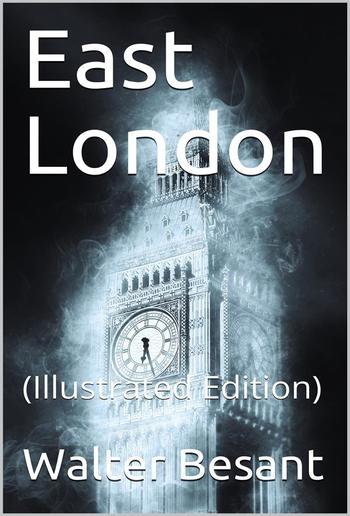
Walter Besant - East London
East London
Walter Besant
Description
IN my previous books on London I have found it necessary to begin with some consideration of the history and antiquities of the district concerned. For instance, my book on Westminster demanded this historical treatment, because Westminster is essentially an old historical city with its roots far down in the centuries of the past: once a Roman station; once the market-place of the island; once a port; always a place of religion and unction; for six hundred years the site of the King’s House; for five hundred years the seat of Parliament; for as many the home of our illustrious dead. But with East London there is no necessity to speak of history. This modern city, the growth of a single century,—nay, of half a century,—has no concern and no interest in the past; its present is not affected by its past; there are no monuments to recall the past; its history is mostly a blank—that blank which is the history of woods and meadows, arable and pasture land, over which the centuries pass, making no more mark than the breezes of yesterday have made on the waves and waters of the ocean.
It is, however, necessary that the reader should understand exactly what I mean by East London. For this purpose I have prepared a small map showing the part of Greater London, which in these pages stands for East London. I include all that area which lies east of Bishopsgate Street Without and north of the river Thames; I include that area newly covered with houses, now a densely populated suburb, lying east of the river Lea; and I include that aggregation of crowded towns, each large enough to form an important city by itself, formed of the once rural suburban villages called Hackney, Clapton, Stoke Newington, Old Ford, Stepney, Bow and Stratford.
In order to save the trouble of a long description, and because the reader ought to know something of the natural features of the ground on which East London stands, I have presented on the map certain indications by which the reader, with a little study, may make out for himself as much of these natural features as are necessary. He will see, for instance, that the parts now lying along the bank of the river were formerly either foreshore or marshland, overflowed at every high tide, and lying below a low, natural cliff, which receded inland till it met the rising ground of the bank of the river Lea. The figures on the map mark the sites of villages successively reclaimed from the river by a dyke or sea-wall; if the reader were to visit these riverside parishes he would find in many places the streets actually lower than the high tide of the river, but protected by this sea-wall, now invisible and built over. North of the cliff was a level expanse of cultivated farms, woods and orchards, common ground and pasture land.

